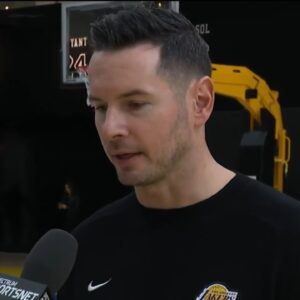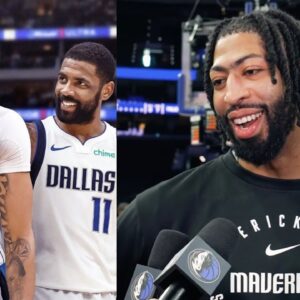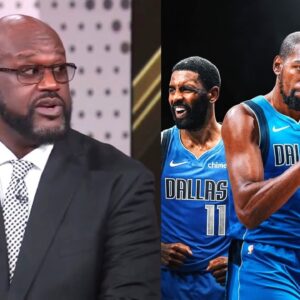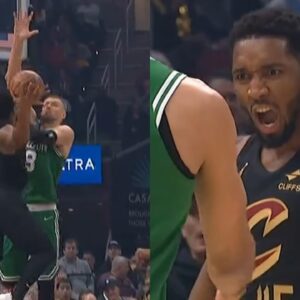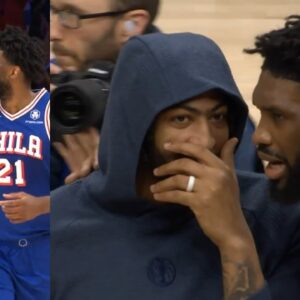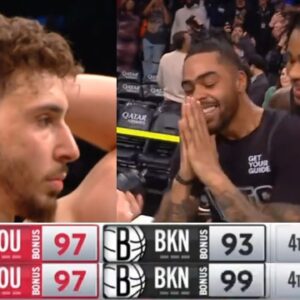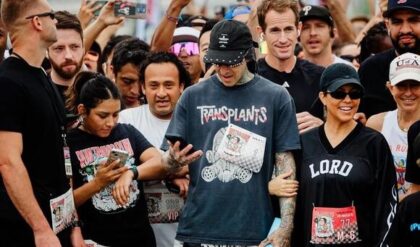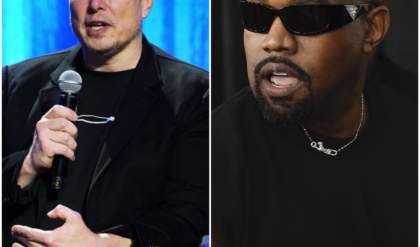
TORONTO — Rick Carlisle started Tuesday night complaining about the officials. A few hours later, the Indiana Pacers coach had bigger concerns.
“It’s very physical. In the game two days ago in Memphis, I thought it was over the top,” Carlisle said about how the refereeing was having an impact on star guard Tyrese Haliburton. “I thought there was too much physical activity, too much hitting, bumping, grabbing, holding. I made it clear, my feelings about it.
“We’ve got to do everything we can do to protect him. There are people out there not only trying to disrupt his game, they’re trying to hurt him. It’s pretty clear to me.”
It’s also pretty clear the Pacers are a distorted approximation of who they were last year. Even if they were aided by injuries in making a run to the Eastern Conference finals last year, the Pacers were a good, energetic team, talented enough to make a trade for Pascal Siakam nearly a month before the deadline.
After being the darlings of last year’s NBA Cup (formerly known as the In-Season Tournament), they wrapped up this year’s version with a 122-111 loss to the Toronto Raptors, a listless first half dooming them. Both teams knew they had no chance of advancing in the tournament at tip, but only one team played a large swath of the game like that.
“I think the product we’re putting on the floor right now as a group is embarrassing,” Haliburton said in a quiet visitors locker room. “(After) the conversation at halftime, I think we entered the second half better. But it’s got to be like that for 48 minutes. Every team is playing hard right now. Every team is young and has energy. And there’s no reason that we shouldn’t be matching and beyond.”
What’s left unsaid is obvious: They’re not.

Pascal Siakam reacts to a referee’s call during Tuesday’s NBA Cup game against Toronto. (Kevin Sousa / Getty Images)
The Pacers are now 9-13. While their fellow occupants of the Eastern Conference middle tier last year, the Cleveland Cavaliers and Orlando Magic, are enjoying promising starts to their seasons, the Pacers barely resemble the run-and-gun team that made headlines even before Siakam came to Indianapolis. The only thing familiar from that version of the team is the defense. The Pacers came into the game ranked 25th in points allowed per possession.
At one point in the second quarter against the Raptors, Haliburton hit a 10-foot floater. The Raptors pushed the pace after the bucket, and despite having everyone back in transition, nobody covered Ochai Agbaji, with Myles Turner pointing at the open man as he protected the paint. Agbaji came into the game shooting 47.1 percent from 3, one of the few Raptors the opposition should make a point of running off the arc.
With the Pacers making a comeback from a 24-point deficit, just a bucket down, Haliburton tried to jump a passing lane. He missed, and Agbaji again got an uncontested 3. There were hints of defensive life, like Siakam’s stripping Scottie Barnes or Turner’s sending RJ Barrett back down the top of the mountain, but little in the way of consistent execution.
Meanwhile, a few Pacers, including Siakam and T.J. McConnell, seemed exasperated by the officiating as the game wound down and the Pacers comeback fell short.
“You cannot control if you make every shot. You can’t control substitution patterns,” Haliburton said. “You can’t control stuff like that. But you can control how hard you’re going to play. You can control your energy and your spirit. Those are all controllable things. Everybody’s got to do a little bit of a gut check, check themselves in the mirror and figure out what we can do better.”
Injuries fall in the “can’t control” category, and they’ve hurt the Pacers. Key perimeter players Andrew Nembhart, Ben Sheppard and Aaron Nesmith have missed significant time. Sheppard and Nesmith aren’t returning imminently.
Still, Haliburton, Siakam and Turner, Indiana’s three most important players, have missed just two games between them. Other teams have had bigger issues with absences.
The poor defense was a possibility, especially with an important wing player like Nesmith out; the mediocre offense is what is crushing them. The Pacers seem like a team in search of an identity. Last year they were fifth in 3-point percentage and second in pace before the Siakam trade. Their effectiveness from deep took a hit after the Siakam trade, but the improvements defensively and in the half court made them a more balanced team.
Well, the Pacers came into the game 26th in 3-pointers attempted rate and 20th in free-throws attempted rate, a combination that makes it nearly impossible to be a good offensive team. Accordingly, they rank 16th in scoring efficiency. For the night against the Raptors, who have the 23rd-ranked defense in the league, they scored just 103.7 points per 100 possessions, which happens to be the same as the Washington Wizards’ league-worst offensive rating.
“It’s hard to make 3s when they’re hugging you. … There are some teams that are committed to taking as many as possible. It works for them,” Carlisle said. “We’re trying to get ourselves whole in terms of our injury situation, and that’s going to take some time. In the meantime, we’re looking for great looks at 3. We’re not built right now just to let them fly. We have to have a level of discretion. We want the great ones.”
At least Haliburton, who got off to a disappointing start, appears to be turning the corner. He had 30 points, including four 3s, Tuesday. He has three or more 3s in six of his last seven games, shooting 49 percent on his looks from distance. He was worlds away from the guy who came to Toronto 15 nights prior, his unorthodox shot looking wonkier than usual.
He said it was nice to see the ball go through the net, especially on the road, as he came into the game averaging just 11.9 points away from Indianapolis. He said the game in Memphis that Carlisle focused on earlier in the evening showed him the type of physical defenses that will be waiting for him, and he needs to adapt. He declined to take too much solace in a big night, given the state of the team.
“I mean, listen, we’re 9-13 right now. We can act like the world is falling apart, and that’s not the case,” Haliburton said. “But there also needs to be a sense of urgency. Everybody can say, ‘Oh, it’s four games, we’ll be back to 500.’ It ain’t that easy.
“It starts with me. I have to be a better leader. I got to do everything better and harder because I’m not ready to piss away a year of my career, or this organization’s — this team’s — season.”
News
JJ Redick reacts to Luka Doncic trade for Anthony Davis
In one of the most jaw-dropping moves of the season, the NBA landscape was rocked by the blockbuster trade involving Luka Dončić and Anthony Davis—a swap that has sent ripples of excitement, disbelief, and heated discussion through the league. Among…
Anthony Davis FULL reaction to trade to Mavericks for Luka Doncic
In a blockbuster move that sent shockwaves through the NBA and left fans reeling, Anthony Davis has been traded to the Dallas Mavericks in exchange for Luka Dončić. In the immediate aftermath of the news, Davis took to the media…
Shaq reacts to Dallas Mavericks wanting Kevin Durant after Luka-AD trade 
In the constantly shifting world of the NBA, trade rumors and blockbuster moves are a regular part of the season’s drama. The latest twist has fans buzzing: the Dallas Mavericks have reportedly set their sights on acquiring Kevin Durant in…
Donovan Mitchell FILTHY poster dunk on Kristaps Porzingis 
In a game filled with high-intensity moments and jaw-dropping highlights, one play in particular has left fans and analysts buzzing about Donovan Mitchell’s latest display of athleticism. Early in the contest, with the atmosphere already charged by an evenly matched…
Joel Embiid hits go-ahead bucket vs Mavs then chats with Anthony Davis after game
In one of the most thrilling contests of the season, Joel Embiid delivered a clutch performance against the Dallas Mavericks, punctuating the game with a go-ahead bucket that sent the home crowd into a frenzy. The atmosphere in the arena…
D’Angelo Russell game winner as Nets hit two 3’s in 3 seconds to win vs Rockets 
In one of the most electrifying moments in recent NBA history, D’Angelo Russell delivered an unforgettable game-winner that left fans and commentators in complete awe. With the Brooklyn Nets locked in a tense battle against the Houston Rockets, the outcome…
End of content
No more pages to load
